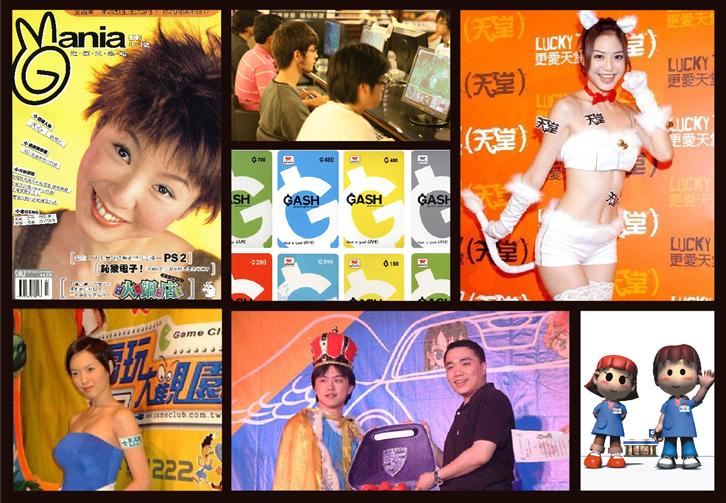
The Years of Senior Gamanian, Lulu in the Fight of Distribution Channels

PLS-TW-PB-Simon Lu(呂俊賢)
Employee: Simon Lu (A.K.A: Lulu)
Started from: April 10th , 2000 (The year when Gamania was founded)
Total employees then: around 100
Position then: responsible for the distribution in marketing department and advertising
Current position: Section manager of GASH PLUS
Unexpected Career Move
G!VOICE: Why did you join Gamania? What sort of changes have the company been through?
Lulu: I’ve known Albert two years before I joined the company in 1998. Back then the company’s name was FullSoft. I was doing AE for advertising then and I knew the field of media. I wanted to know more about computer game broadcasting so I talked to Albert about the production of TV programs about computer games. Back then, FullSoft was producing the show, Game Club. There was no income source for TV program production in the market then. I was curious why they (as a small company with a few employees and were in debt) wanted to run something like this that would only cost money? That was my initial impression on the company.
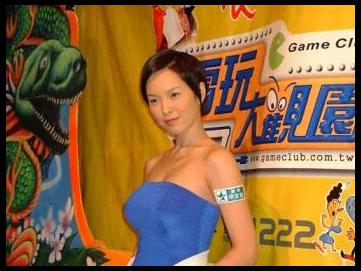
▲Taiwanese actress, Tien-Hsin hosted the TV show, Game Club and successfully drew in a large audience base and was very popular by the younger generation.
The broadcast project didn’t come to life, but I managed to stay in touch with this company. I often went to the office in FullSoft simply because Albert and the special assistant, Anne were very easy going people. One day, Anne said that the company would change its name and even had plans for IPO. She asked me if I was interested in joining the team. I declined initially because I already had quite a huge workload, and also I thought why should I go to a company that seemed like it’s gonna go bankrupt at any minute?
As for why I eventually joined Gamania… (lol) To be honest, I was there for ‘the lady’. After FullSoft changed its name to Gamania and established magazine department to issue ‘Mania’, Albert said something rather ambitious, that he wanted to sell more than 200,000 copies. Back then, it was near the terminal era for magazine publishing in Taiwan, the top selling magazines such as Business Weekly (Taiwan) only sold about 100,000 copies. Anne came ask me again to join on board and took care of publishing and advertising. I just thought the big man (Albert) was mad and my initial plan was to get ‘the lady’ and returned to advertising field. Little did I know, I got ‘the lady’, she was my wife the next year, and I remained in Gamania for more than a decade.
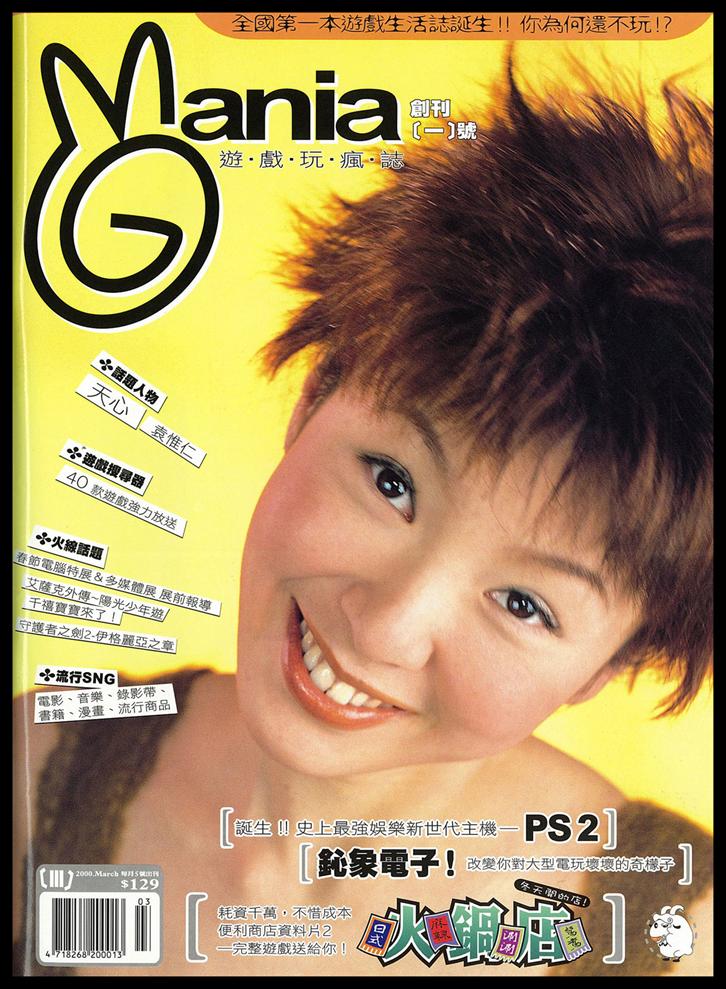
When I was on board, the magazine hadn’t taken shape, I thought this was so unreal. After the official launch of the magazine, it did sell over 200,000 copies and broke the record of game magazine publication. Later on, Albert spent more than hundreds of millions building the largest online game IDC in Asia, despite the negative rumors from the peers. ‘Lineage’ performed excellent in the market, we made the money back within a few months. Starting in 2000, the company expanded in staff and scale, establishing subsidiaries, investing in overseas etc. I didn’t think about leaving in part because I also rapidly developed with the company, there were too many things to do at work, I barely had any time to think, on the other hand, I had new challenge, new things to learn every year, which suits me perfectly. That’s what I wanted.
Breaking the Tradition: Innovative Marketing and Packaging
G!VOICE: From your professional opinion, what have been the changes in distribution channels?
Lulu: in the early console game era, the packaging for game product was more or less the same. They were mostly sold in the book store and 3C electronic stores. Later on, to increase attraction, changes were made in the packaging and convenience stores were added as a distribution channel. Before the launch of ‘Convenience Store’, the competition on packaging had reached its peak stage. Game product in huge box gained its place in convenience stores, products were getting fancier and fancier in their packaging, the market price also jacked up to more than NT1000 dollars. However, ‘Convenience Store’ ran for an absolute opposite pitch.
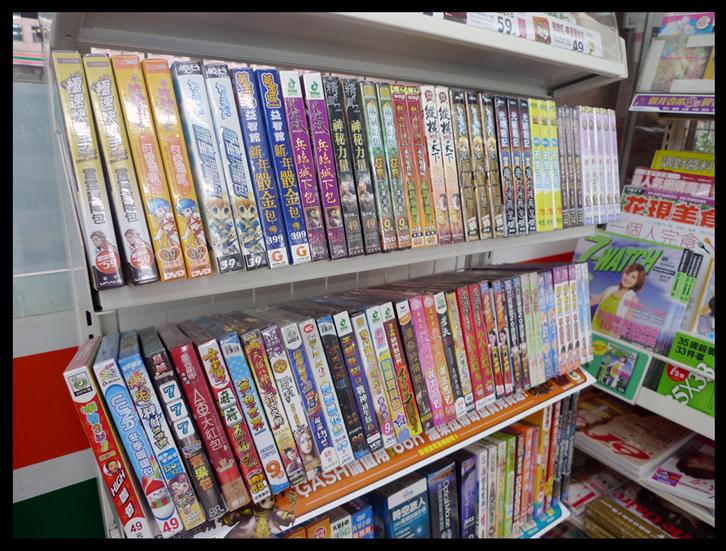
▲The package for game product in early years were quite big, however, the box merely contained game installation CD and instruction manual. Nowadays, 90% of game programs are downloadable, you don’t see the on the racks of convenience stores as you used to.
The package for ‘Convenience Store’ was only a size of a book, printed with endorsement person, Tien-Hsin’s image on the outside, making it fairly easy to be placed on the standing rack in the convenience stores. The strategy gained the chance for being placed on the first roll, alongside with music CDs and created a trendy impression. The price for other games ranged from NT600 to NT1000 making the NT299 player-friendly price of ‘Convenience Store’ a killer item on the rack which was also one of the key factors to its success.
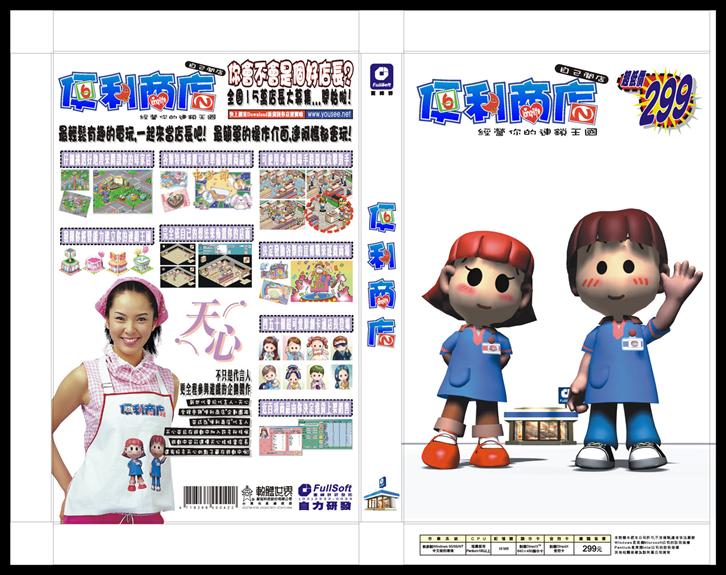
▲‘Convenience Store’ took an opposite pricing approach, at a lower price, NT299, which made it a huge success in the game market.
‘Convenience Store’ had significant impact on the game industry in Taiwan. In addition to the ‘explosive marketing’ and ‘celebrity endorsement’, ‘Convenience Store’ started the price war in the market. Back then, the average sales for games were around 100,000 copies, maximum 120~130,000 copies but when ‘Convenience Stores’ launched, it sold more than 300,000 copies and stretched its way to over a million copies towards the end. The market potential was pushed to the next level, from then on, the criterion for measuring the popularity of the game was increased to 200,000 copies.
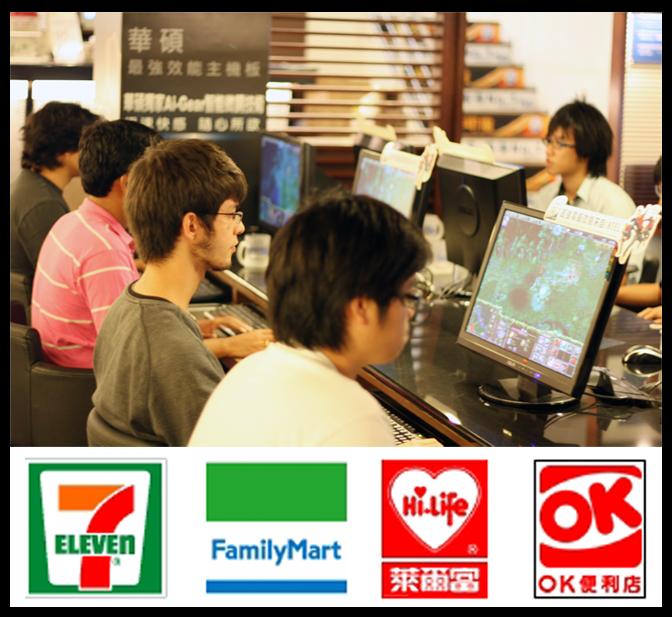
▲Internet cafes and these 4 convenience store chains were the major distribution channels for game industry back in the day.
The success also made the physical distribution channels aware that game products had substantial potential. Game companies and channel owners started to think differently. Of course, it made the internet cafes and 4 major convenience store chains became the major sales distributers. After ‘Lineage’ launched in the summer of 2000, the number of internet cafes increased to over 8000.
This phenomenon went through significant change in recent years. The household internet bandwidth became larger and larger which resulted in fewer and fewer physical products. The importance of physical distribution channel gradually declined over the years. Nowadays, over 90% of the games in Gamania are downloadable, in other words, we do not need to rely on physical distribution channels anymore. 70% of GASH cards are still sold in the physical channels but it is mainly because Taiwanese likes to conduct transactions in cash and that the children do not own credit cards to purchase online.
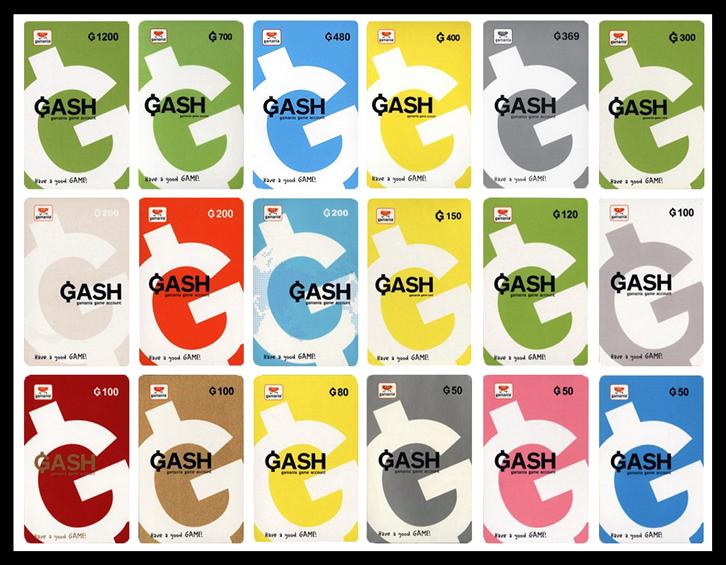
▲The birth of GASH cards solved many frauds and money-related disputes in the game world. The price is also user-friendly, starting from NT50 dollars, people from any age groups can enjoy the fun of online games.
Digital Era is a Content-Driven Era
G!VOICE: Please roughly describe the course of Gamania’s fights with convenience stores.
Lulu: in the console game era, game companies and distribution channel owners split profit in 50/50 way, however after the massive sales volume contributed by ‘Convenience Stores’, game companies gradually gaining ground from 50/50 to 60/40. In the era of online game, the channels generate massive revenue, but the game companies do not enjoy good percentage in profit splitting. Chain stores did not have fair grounds toward game companies.
Channel industry for the longest time thought that they owned the distribution channels, therefore the majority of the profit should be controlled by them. They thought the channels were helping the games to sell, which makes or breaks a game product. That was an unfair rationale for game companies such as us. In fact, the content of the game attracts consumers to purchase the games and they go to places where the games are sold.
We wanted to change the attitude and terms and condition the channels had against us. In 2002 and 2003, we started the first channel battle. We removed all products from the racks in the convenience stores apart from OK convenience store chain. However, 1 year after, all the convenience stores begged us to take them back because the only distribution channel, OK convenience stores earned the sales revenue worth of a year in just 1 month by selling Gamania’s product exclusively.
The second channel negotiation took place in 2007, however this time, we peacefully reached an agreement on lowering the cost.
Until 2010, the 3rd channel war broke out. Convenience stores thought they had enough game products and more chain stores than ever, so they jointly removed Gamania products from the racks. However, they neglected a fact that online players could change their consumption habits. We were confident in guiding the players to download game programs and the internet prevalence and bandwidth improvement also contributed to the change. Nowadays, students could save up more from purchasing GASH points in stationary stores near schools than buying packaged game product from the convenience stores. Although, we were removed from the racks, it just proved that what we said was true: digital era is a content-driven era.
Explosive Marketing Gradually Turned into Viral Marketing
G!VOICE: Please compare explosive marketing then and now.
Lulu: In the past, explosive marketing started from ‘Convenience Store’ and the release of Mania magazine. The games in the past, if it aimed to be a ‘huge piece’, the company would throw in every resource into it. Other companies did it too but Gamania did it more thoroughly and forcefully.
In the beginning, every new product launch determined the life or death of the company. You held no reservation, we went all in every time and aimed for only the best result. That, of course demonstrated our steel will and resolution.
Hiring endorsement person, hosting large-scale annual celebration event, giving away high-end sports car, spending substantial amount on TV commercials etc were among Gamania’s initiatives. Gamanian wanted to do something no one had done before, we wanted to do it big, sometimes few times bigger than others.

First endorsement person for ‘Lineage’ was Taiwanese renowned singer celebrity, Mavis Fan (left). In 2007, the endorsement person was replaced by famous model, Bianca Bai (right) to drum up more sensation.

▲In 2000, ‘Lineage’ held a sensational press conference for debut release.
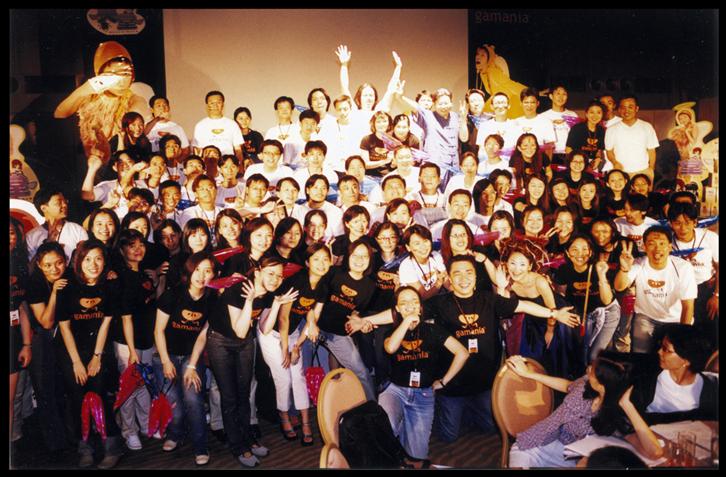
‘Lineage: Giran’ launched in July, 2001, soon after the release, Gamania held a sensational event, ‘Porsche Speed Challenge’ in Taiwan and Hong Kong.
The time has changed. Explosive marketing from the past has become the basic ‘trick’. Celebrity endorsement, TV commercials, give-aways in special events etc have become the norms in the marketing book for game companies. These things had lost the effects and a lot of the times, the game companies have to do them because they don’t have other tricks up their sleeves. Personally, I think it is important to distinguish ourselves from others. When we do it, we have to do it thorough. We exploded these ‘tricks’ but we need to manage and carry on their ‘proliferation effect’.
Now we use topical, community based approach to manage. Explosive marketing is just a start, we need to work on digging deep and spreading wide. If we only explode it once, and let it run on its own course, it is not enough because the competition is too fierce. When ‘Lineage’ was first launched, there were about 3-5 online games a year in the market and the impact gaps between them were huge. ‘Lineage’ treated every version upgrade as almost the launch of a new game, we did explosive marketing each time, creating hot discussion before the release. Players would line up overnight just to fight for that game package. What we did back then was a topic it self so of course, we created sensation.
But now, there is almost a new game coming out or version upgrade of an old game every week and players get tired of the same tricks easily. The life cycle of the products has been shortened to 3-6 months. The first two months were crucial, if the product receives little attention, then the company is not likely to invest more resource to run it. Players are used to explosive marketing, so much so that they grew resilience to it. Some of the over-run campaign even annoys them. I think we should put the focus on the brewing or expectation period and how we are going to manage the topic and player community after the launch to continually expand its effect and prevalence. The one who can do that will be the winner.
Broadband Internet Heralds the Coming of Internet Era
G!VOICE: What would be the development of channels in the future?
Lulu: Physical channels have has their time, I think from now on the channels will belong to the internet era with the help of broadband. The broadband internet provides fast enough speed for downloads. In the past, we relied on that disk, which was why game companies relied on physical channels. Now, we could say the same for our demands for broadband internet.
On the other hand, we are influenced by Browser Games. The early online games were client based, players need to download main program to play. Since the rise of Facebook, a lot of online players are getting more and more used to opening IE and play online games. Facebook also wants to be a virtual channel distributor but they haven’t done a good enough job so far. We still own the channels. Facebook is running a global platform so it still lacks that ‘last mile’ in reaching its end users effectively, naming getting the ‘localization’ down. That ‘last mile’ is definitely needed for channel distribution. However, if they could manage both global and local operation, then they could become the new channel force to be reckoned with.
In order to do that, the best way is to collaborate with companies that already dominate the local market, such as ‘Happy Farm’ sought collaboration with GASH. The industry is working towards this direction but this differs from traditionally channel distribution in concept. In the digital content-driven era, the channels, virtual or physical, should be able to adapt to the digital content. Therefore, I think the channels in the future will be more smooth, direct and versatile.
